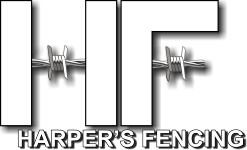Blog
Securing Your Space: The Ultimate Guide to Choosing the Right Fence for Your Property
Introduction: In the realm of property enhancement, a well-chosen fence serves as both a practical and aesthetic asset. This SEO blog will guide you through the crucial considerations for selecting the perfect fence to secure and beautify your space.
- Defining Your Purpose: Before diving into fence options, identify your primary goals. Are you seeking privacy, enhancing curb appeal, or establishing boundaries? Understanding your objectives will shape the rest of your decision-making process.
- Material Matters: Explore the various fence materials, such as wood, vinyl, metal, and composite. Each material comes with its unique set of characteristics, from the classic charm of wood to the low-maintenance appeal of vinyl. Consider factors like durability, maintenance, and aesthetics.
- Style Selection: The style of your fence can significantly impact the overall look of your property. Whether you prefer a classic picket fence, a modern metal design, or a rustic wooden structure, align your choice with your home's architectural style.
- Budgetary Boundaries: Establishing a budget early on helps narrow down your options. While it's tempting to focus solely on aesthetics, balance your desires with financial practicality. This step ensures that you find a fence that not only suits your taste but also fits your financial framework.
- Local Regulations and Permits: Investigate local regulations regarding fence height, materials, and placement. Acquiring the necessary permits ensures that your new fence complies with community guidelines, preventing any potential legal issues down the road.
- Durability and Maintenance: Evaluate the long-term durability of your chosen material. Consider factors like resistance to weather, insects, and general wear and tear. Additionally, assess the maintenance requirements to ensure your fence stands the test of time without excessive upkeep.
- Installation Insights: Whether you choose professional installation or plan a DIY project, understanding the intricacies of fence installation is crucial. Proper installation ensures structural integrity and longevity, so weigh the pros and cons of each approach.
Conclusion: Selecting the right fence involves a blend of practicality, aesthetics, and adherence to local regulations. By following this comprehensive guide, you'll be equipped to make an informed decision that not only enhances your property's security but also adds a touch of style to your.
A wood fence is a popular and versatile option for enclosing and enhancing the aesthetics of residential properties. Here are some key points to consider when it comes to wood fences:
- Types of Wood: There are various types of wood commonly used for fencing, including cedar, pine, redwood, and spruce. Each wood type has its own characteristics in terms of durability, appearance, and cost. Cedar and redwood are naturally resistant to decay and insect infestations, making them popular choices.
- Fence Style: Wood fences come in a variety of styles, including picket fences, privacy fences, post-and-rail fences, lattice fences, and more. The style you choose will depend on your specific needs, desired level of privacy, and the overall aesthetic you want to achieve.
- Fence Height: Determine the appropriate height for your wood fence based on your objectives. Privacy fences are typically taller, ranging from 6 to 8 feet, while picket fences are usually shorter, around 3 to 4 feet. Check local regulations or homeowners association guidelines for any height restrictions in your area.
- Maintenance: Wood fences require regular maintenance to ensure their longevity and appearance. This includes applying a protective stain or sealant every few years to prevent moisture damage, rot, and insect infestations. Additionally, inspect the fence regularly for any signs of damage, loose boards, or splintering and make necessary repairs promptly.
- Installation: Consider whether you will install the fence yourself or hire a professional. Installing a wood fence can be a DIY project if you have the necessary skills, tools, and time. However, if you're unsure or the project is complex, it's best to seek professional installation to ensure a sturdy and properly aligned fence.
- Cost: The cost of a wood fence can vary depending on factors such as the type of wood, fence style, height, and the total length of the fence. Obtain quotes from different suppliers or contractors to compare prices and ensure that the project fits within your budget.
- Neighbor Considerations: If you're installing a fence that borders your neighbor's property, it's important to have open communication and ensure compliance with local regulations. Discuss your plans with your neighbor and gain their approval to avoid any potential conflicts.
- Customization: Wood fences offer flexibility in terms of customization. You can paint or stain the fence to match your preferred color scheme or architectural style. Additionally, you can incorporate decorative elements such as lattice panels, post caps, or ornamental details to add visual interest.

